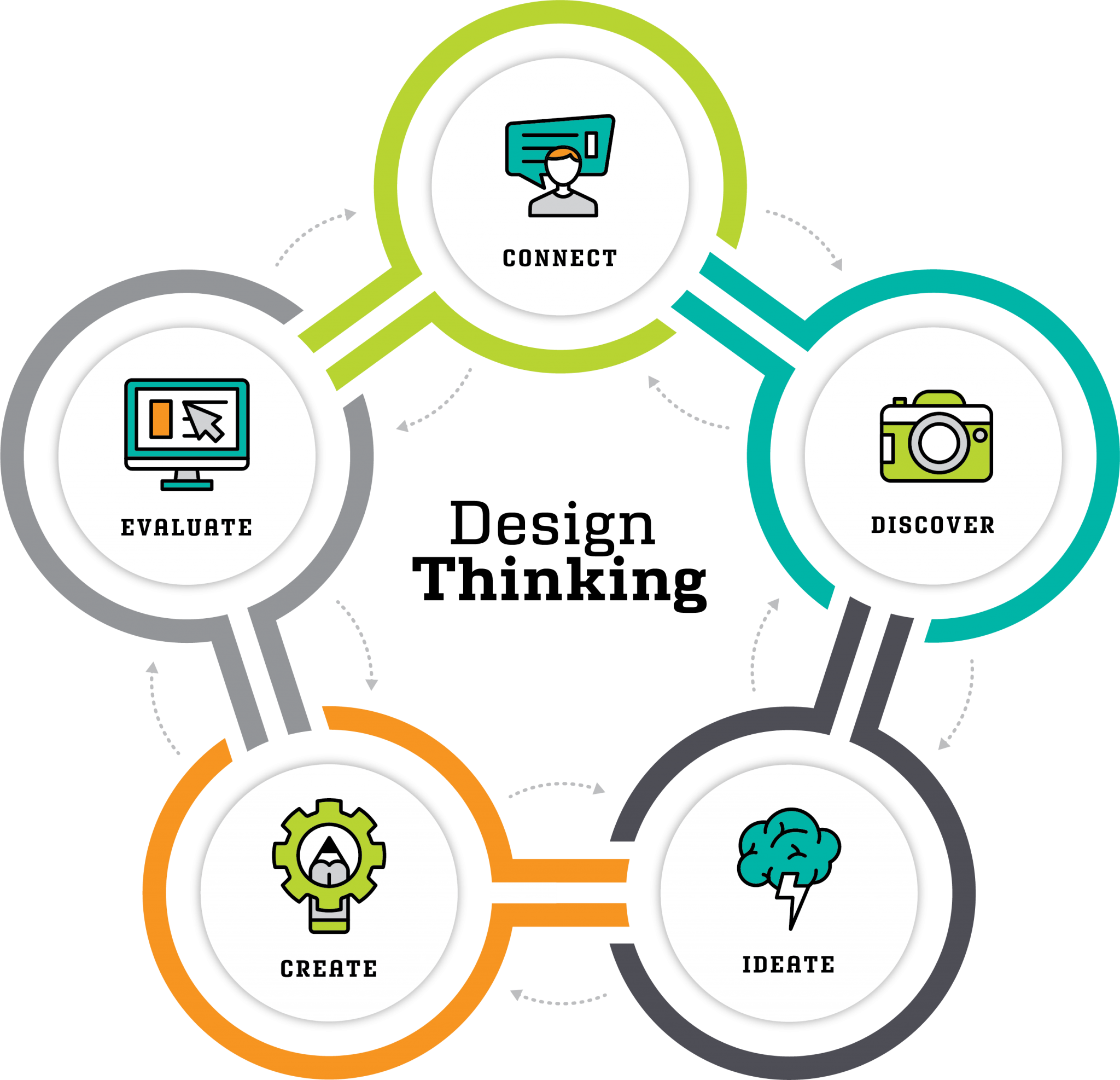Table Of Content

It’s great for gathering both quantitative and qualitative feedback from users and is perfect for the Empathize stage of the project. Surveys allow for gathering quantitative data about the user’s needs, challenges, and behaviors. On the other hand, user interviews allow for a deep understanding of the user experiences, challenges, and behaviors by talking to them directly. Let’s take a closer look at each of the stages and the design thinking tools that are used during them. A customer journey map is a graphic representation of each interaction your clients have with your company, your goods and services, and generally your entire brand. Journey maps show all the points of contact that your clients might have through pictures that show how they progressed through each stage of interaction.
Ideation
Explore several resources for information on the project's topic, such as websites, books, blogs, articles, etc. These are short exercises that initiate exchanges between participants, create movement, energize the team, and make them feel comfortable working and collaborating together. These exercises can also be used in the case of a drop in the energy of the group. According to Klap, Prototyping can serve different objectives, so you can find below a list of tools for each objective category. Design research is useful to not only understand individuals but alsoframe individual behaviors in the context of the community that surroundsthem. They’re built to help you go beyond the basics and dive deeper into the nuances of design.
Affinity Diagrams: How to Cluster Your Ideas and Reveal Insights

Everything on this site is free for you to use and share with proper attribution. Design Thinking is a creative process that helps you design meaningful solutions to problems in the classroom, at your school, and in your community. This Design Thinking toolkit and Designer's Workbook provides you with instructions to explore Design Thinking with your students. Using the Design Thinking toolkit will help you to get your students engaged in the classroom in ways that are hard to achieve through other exercises. You can use the design thinking process to get more people involved, and help everyone contribute ideas. Your priority here is to generate as many ideas as possible, without judging or evaluating them.
Design thinking tools for the complete process
The mission of the MIT Sloan School of Management is to develop principled, innovative leaders who improve the world and to generate ideas that advance management practice. But to unlock greater potential and to learn how to work as a dynamic problem solver, creative confidence is key. For IDEO founder David Kelley, creative confidence is the belief that everyone is creative, and that creativity isn’t the ability to draw or compose or sculpt, but a way of understanding the world. IDEO did not invent design thinking, but we have become known for practicing it and applying it to solving problems small and large. When we looked back over our shoulder, we discovered that there was a revolutionary movement behind us.
Design thinking examples: What it looks like in practice
With this solid background, you and your team members can start to look at the problem from different perspectives and ideate innovative solutions to your problem statement. In contrast, in an indirect customer market, which is common in B2C solutions, product teams need a way to maintain a connection with their target customers. So, they develop ‘personas,’ fictional consumers and users derived from user research.
Designing the User Experience through Journey Maps
Essentially, the proposal is to group ideas based on affinity, similarity, dependence, or proximity. Then put them into a diagram within the macro areas that identify a topic to be worked on, subdivisions, and interdependencies. Reflections based on real data from Exploratory, Desk, and In-Depth surveys, transformed into cards that facilitate the visualization of information.
Evaluation and testing determine if the product can be delivered to the consumer or iterated and modified. Lego Serious Play is a commonly used tool by managers and executive boards to encourage creative thinking when it comes to addressing challenges. Lego Serious Play is an effective tool as it drives the team to think in a modular type and try to visualise their ideas through metaphoric characters. Compared with the Lego Serious Play, it is more effective than the materials prototyping because it doesn’t require experience in sculpturing or drawing. Another advantage of the Lego Serious Play is that it can be used for visual services and products.
What Are Wicked Problems and How Might We Solve Them?
Second, to do more communication with users, do more research and questionnaires, use various ways to understand the user's real ideas. In this example, if a professional chef does not feel that the tool is unresponsive to use, and disabled people are not inconvenient to use it, the average user will not even feel this. You can also ask for an enterprise plan tailored to your project’s needs. Figma is a web-based design tool that allows for creating and collaborating on design projects.
The approach, regarded as an advanced qualitative research strategy, should be employed when attempting to comprehend customer behavior by examining its particular and individual characteristics. After solutions have been generated, it’s time to take them back out to participants. You can also build clickable prototypes right inside your design environment, link your artboards together with interactive hotspots, and sync your designs with InVision with just a click. Thanks to point-and-shoot prototyping, a comprehensive gesture picklist, and instant playback, you can create fluid interactions and high-fidelity prototypes faster than ever.
Integrating systems dynamics into agile practices allows IT professionals to model and simulate the behaviors of complex systems over time. This predictive capability can inform sprint planning, risk management and the prioritization of features based on their potential impact on the system. By understanding the feedback loops and causal relationships that drive system behavior, IT teams can anticipate challenges and opportunities, leading to more informed decision-making and effective agile implementation. Story maps help teams ideate, plan, and group activities in a workflow or user journey. They allow teams to address the most critical steps before improving existing steps or adding new functionality.
Your kit will be right here (and at the bottom of the page, if you decide to read on). The idea is taken and converted into a three-dimensional representation of a product with varying levels of realism. The Empathy Map is a tool for visual analysis and description of the behavioral characteristics of the ideal client. Using this straightforward and didactic Design Thinking resource, it is easy to describe scenarios, thoughts, actions, challenges, and demands of your target audience. Guidelines must be followed continually throughout the development of a project in order to identify the limits of tasks while retaining the desired focus. Focus group surveys are designed to evaluate public opinion on a certain subject or product.
The idea is to challenge any assumptions or biases teams have, instead using their customer perspective as a guiding source. This is important because it aligns the team on what needs to be considered during the rest of the design thinking process. While often used in product design, service design, and customer experience, you can use design thinking in virtually any situation, industry, or organization to create user-centric solutions to specific problems. Design thinking is an iterative, non-linear process which focuses on a collaboration between designers and users.
The idea is to create a prototype that is sufficiently able to display a specific feature or working mode. They truly serve as a collaborative partner throughout the creative process. They can suggest design alterations, predict user preferences, and even generate entire design concepts from a simple prompt.
A core part of this is by swiftly prototyping possible solutions to get a feel for how effective they will be ahead of putting massive organizational cogs into motion. To find the best creative AI tool to boost your creative productivity, you need to know what features and capabilities set the best tools apart. AI tools provide a way for experimentation and exploration, enabling designers to iterate rapidly.

No comments:
Post a Comment